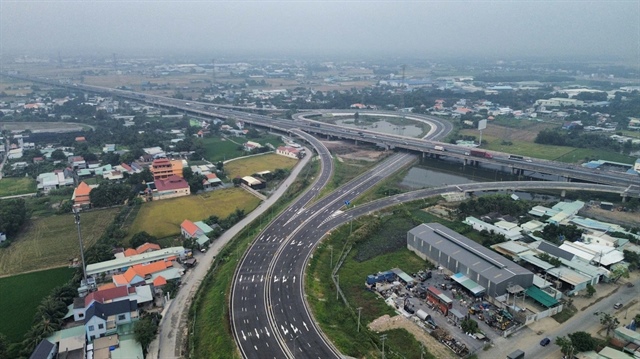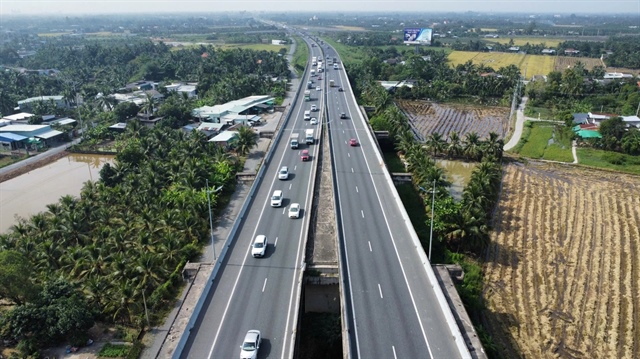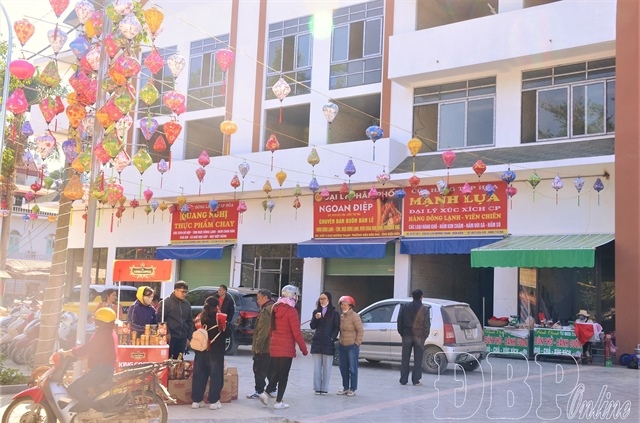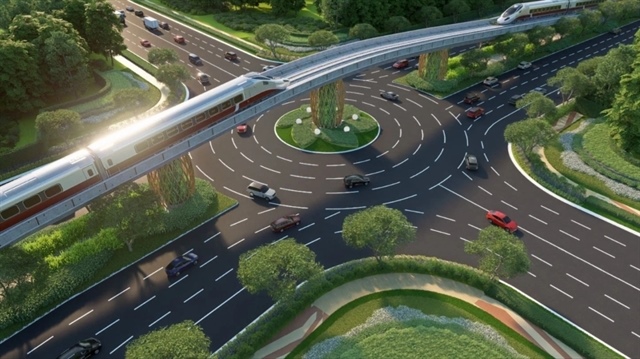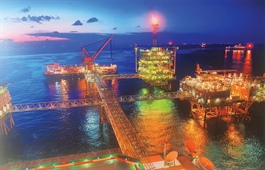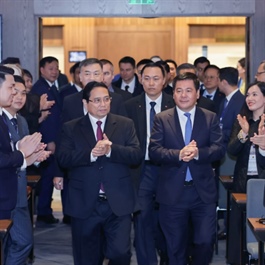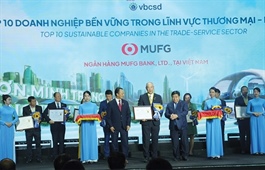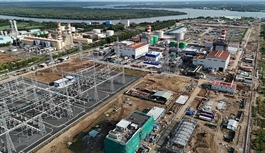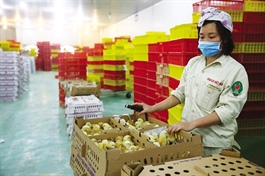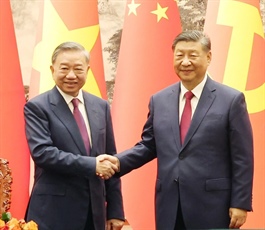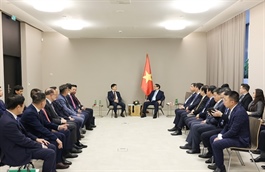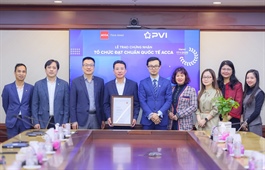Infrastructure development boosts economy in Vietnam's Mekong Delta
Infrastructure development boosts economy in Vietnam's Mekong Delta
Thanks to the national government's investment in infrastructure in the Mekong Delta, localities in the region have achieved outstanding results in economic development over the past few years, returning to the growth trajectory seen before the COVID-19 pandemic.
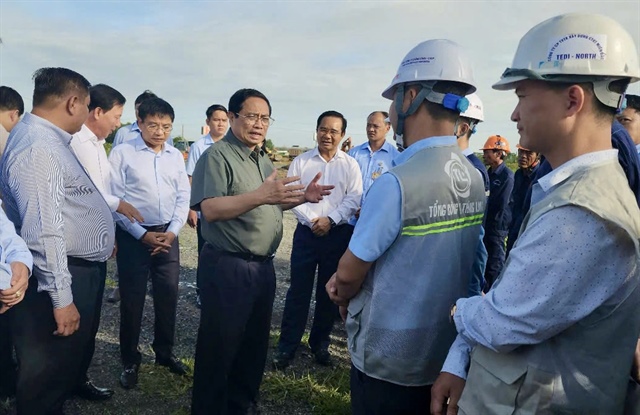
120 kilometers of expressways has helped shorten the travel time from Ho Chi Minh City to the Mekong Delta. Photo: Mau Truong / Tuoi Tre |
In 2021-25, the economy of the Mekong Delta and the country as a whole were heavily impacted by the COVID-19 pandemic and global conflicts.
2024 was considered a pivotal year for the provinces to complete their development targets for the period.
Outstanding budget revenue
In late 2023, the 23-kilometer My Thuan-Can Tho Expressway was opened to traffic, connecting to Ho Chi Minh City-Trung Luong and Trung Luong-My Thuan expressways.
The 120 kilometers of expressways have shortened the travel time from Ho Chi Minh City to the Mekong Delta by two hours.
To achieve the goal of 600 kilometers of expressways in the Mekong Delta region, Prime Minister Pham Minh Chinh has repeatedly surveyed and worked with local authorities to resolve difficulties, such as material and funding shortages.
The government’s care led to significant results in the economic and social development in the region last year, particularly improving budget revenue.
In particular, Long An collected over VND25.8 trillion (US$1 billion) in budget revenue, increasing 27.5 percent year on year and exceeding estimates by 21.3 percent.
Hau Giang’s 2024 budget collection hit VND7.52 trillion ($298.1 million), an increase of 23.52 percent.
Notably, Tra Vinh, once considered a remote province, made a breakthrough with budget revenue of over VND18.63 trillion ($737.4 million) in 2024, surpassing estimates by 36.38 percent. Tra Vinh also led the Mekong Delta in terms of the gross regional domestic product expansion with a 10.04 percent growth rate, followed by Hau Giang with 8.76 percent and Long An with 8.3 percent.
Attractive destination for investors
Long An was the only Mekong Delta province on the list of the 10 most attractive localities for large enterprises in 2024 announced by the Vietnam Report.
With its strategic location next to Ho Chi Minh City, Long An has been a major investment destination in the Mekong Delta region for many years.
Last year, the province attracted 104 new FDI projects with total registered capital of $507 million, while seeing 85 operational FDI projects revise up their capital by $153 million.
|
|
| The Ben Luc-Long Thanh Expressway connecting National Highway 1 and the Ho Chi Minh City-Trung Luong is ready for opening to traffic. Photo: An Long / Tuoi Tre |
Domestic investment also saw promising results, with 57 new projects approved with total registered capital of VND175.3 trillion ($6.9 billion) and 33 projects receiving an additional VND4.4 trillion ($174 million).
To date, foreign investment in Long An has exceeded $14.2 billion, poured into 1,483 projects, accounting for over 71 percent of the projects and more than 38 percent of the foreign investment in the Mekong Delta region.
Other provinces have also achieved encouraging results in attracting investment. Notable examples include Tien Giang with 20 new projects, Tra Vinh with 15, and Hau Giang with eight in 2024.
These achievements were thanks to the investment in infrastructure connecting provinces, along with financial support from the central government and the active efforts of the government and ministries to remove bottlenecks.
Fulfilling 2021-25 objectives
The 3.4-kilometer road connecting the Ho Chi Minh City-Trung Luong Expressway and National Highway 1, part of the Ben Luc-Long Thanh Expressway project, is ready for the public, providing easier access to the region.
Ho Chi Minh City’s Belt Road No. 3 through Long An is approaching completion, and is estimated to be open later this year, while a series of provincial road projects are launching.
|
|
| The Rach Mieu 2 Bridge connecting Ben Tre and Tra Vinh Provinces is expected for completion in 2025, creating a driving force for the two provinces’ development. Photo: Mau Truong / Tuoi Tre |
The improved accessibility of the gateway area has driven development across the region.
Tran Ngoc Tam, chairman of the administration in Ben Tre Province, said trade and service activities were vibrant with stable goods prices last year.
The province’s total retail sales of goods and services in 2024 were nearly VND70.9 trillion ($2.8 billion), an 11.68-percent increase compared to the same period in 2023.
Trade activities also thrived in the last months of 2024, with exports and imports estimated at $1.75 billion and $520 million, up 20.27 and 25.61 percent, respectively.
In addition to expressway projects connecting Ho Chi Minh City with Mekong Delta provinces and waterway dredging projects, Ben Tre benefits from the expansion of National Highway 60 and the Rach Mieu 2 Bridge project in the coming time, Tam added.
In 2025, the province will boost infrastructure development, specifically external connectivity infrastructure, creating new development spaces.
Ben Tre will continue to collaborate on implementing important traffic projects, including Rach Mieu 2 Bridge and access roads to the bridge, Ba Lai 8 Bridge, coastal roads linking Ben Tre with Tien Giang and Tra Vinh Provinces, Cua Dai Bridge connecting Ben Tre with Tien Giang, along with Dinh Khao Bridge, Tam added.
Meanwhile, Hau Giang will focus on investment attraction, said vice-chairman of the provincial administration Nguyen Van Hoa.
He noted that the province would speed up the development of the Song Hau 2 and Dong Phu 2 industrial parks, continue to develop infrastructure for industrial clusters, strengthen budget revenue management, analyze and forecast revenue collection potential, and propose solutions to enhance revenue collection, especially from land use.


